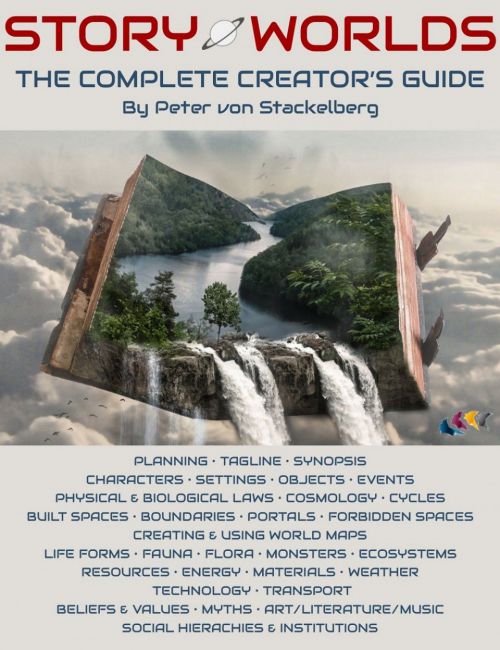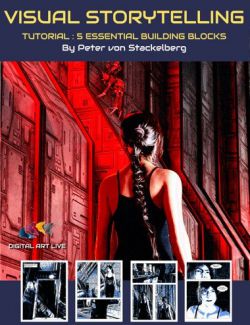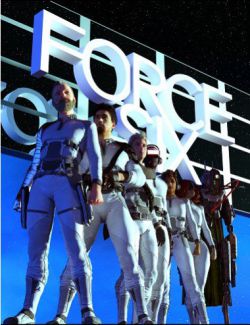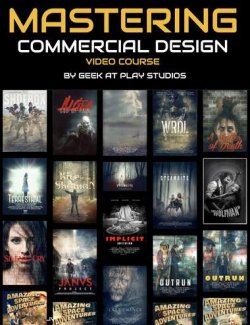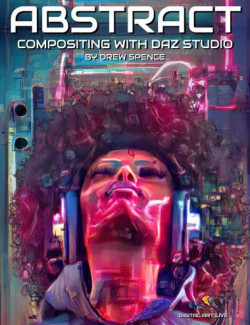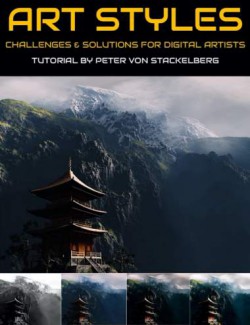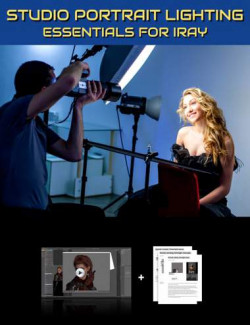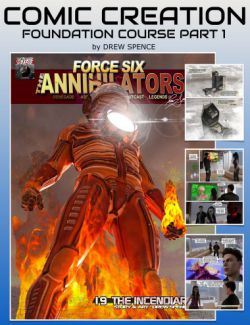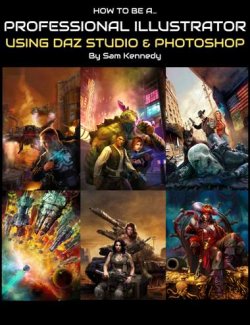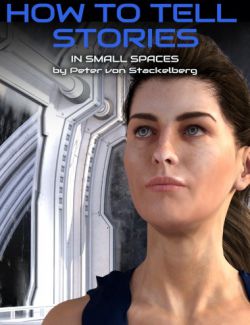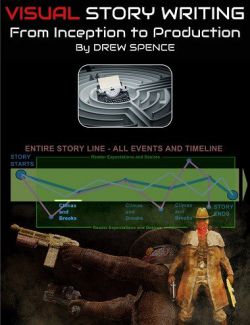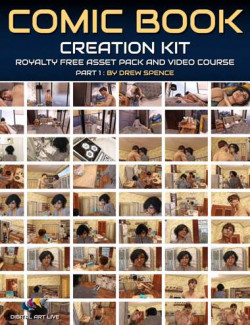Creating effective visual narratives requires taking a step back and having a proper bird’s eye view of the universe that your stories will exist in.
The process of “World Building” as a container for your stories is the smart approach for gaining continuity and generating intrigue. It’s letting the reader know that your stories are held within a planned, comprehensive and compelling world to explore…….they simply won’t be able to wait for your next chapter!
In this set of tutorials, Peter von Stackelberg, a professional futurist, illustrator and writer teaches a must-have framework for world building.
Peter uses DAZ Studio to illustrate his own stories and helps artists work towards creating visual narratives in this tutorial set with planning their storyworlds.
Tutorial 1
Duration : 1 hour 36 minutes
- How to plan storyworlds
– The Tagline
– Controlling Idea (Theme)
– Storyworld Genre
– Spectrum of Storyworlds (Primary vs. Secondary)
– Fiction, Non-Fiction, and Hybrid Storyworlds
– Storyworld Synopsis
– Design Aesthetic & Style Guides
– Using Storyworlds Across Multiple Media
– Storyworld Expandability
– Storyworlds Franchises
- Storyworld Elements
– Space-Time
– Characters
– Significant Objects
– Settings/Locations
– Events
– System States
- Natural Elements of Storyworlds
– Physical & Biological Laws
– Cosmology
– Multiverse/Universe
– Galaxy
– Star System
– Planets, Moons & More
– Cycles in Storytelling
– Role of Cycles in Storytelling
– Environmental Cycles
– Physiological Cycles
– Institutional Cycles
- Spaces in Storyworlds
– Boundaries & Borders
– Portals & Passages
– Public, Private & Personal Spaces
– Embodied Spaces
– Forbidden Spaces
– Sacred Spaces
– Unknown & Unexplored Spaces
– Metaphysical Spaces
– Creating & Using World Maps
Tutorial 2
Duration : 1 hour 41 minutes
- Life forms in Storyworlds
– Humans & Other Sentient Beings
– Animals (Fauna) – Non-Sentient
– Plants (Flora)
– Gods
– Monsters
– Ecosystems
- Universal Resources in Storyworlds
– Air
– Water
– Nutrients
– Energy
– Materials
– Nutrients
- Socioeconomic Resources
– Labor
– Population
– Information
– Capital
– Technology
- Cultural Resources
– Beliefs & Values
– Myths
– Art, Literature & Music
- Social Structures
– Social Institutions
– Social Order
– Social Norms
– Social Hierachies
– Flows Within Social Structures
About Peter von Stackelberg
Peter von Stackelberg is a writer, story architect and worldbuilder, university lecturer, and futurist. He has more than four decades of experience as a writer and award-winning journalist and almost 30 years of experience as a consultant and professional futurist.
For the past eight years, Peter has focused on emerging media technologies and is an expert on transmedia storytelling and constructing storyworlds. He has also worked on technology, innovation, and strategic foresight projects for companies like Honda R&D North America, General Motors, Shell Oil Company, Lockheed Martin, Texaco, Hasbro, and many others.
His book Technology & the Future: Managing Change and Innovation in the 21st Century was a best seller in its category for five weeks when released on Amazon in 2014.
Peter has taught a wide range of university and college courses in English, communications and business, including Digital Storytelling; Technology, Innovation, and the Future; Systems Thinking; Strategic Management; and Business Communications.
He has a B.A. in Journalism from Ryerson University, a M.S. in Studies of the Future from University of Houston-Clear Lake, and a M.S. in Information Design & Technology from SUNY Polytechnic University.
What's Included and Features
- Story Worlds (.MP4)
- Key plot points PDF
- Tutorial 1 recording MP4
- Tutorial 2 recording MP4
- Story mandala image JPG
- Storyworld Timeline Template illustration PDF
- Storyworlds Session 1 PDF slide deck
- Storyworlds Session 2 PDF slide deck
- Trail of the butterfly timeline PDF
- Creator's guide to storyworld : step by step PDF guide
- Tutorial one timeline:
- 00:01 Introduction
- 00:04 About Peter’s opening visual
- 00:06 Jeff Gomez quotation
- 00:07 Definition : Rich storyworlds - “The universe” within which stories exist.
- 00:10 “Where do I start?”
- 00:11 Primary and secondary worlds (real and imaginary)
- 00:14 A workflow for building a StoryWorld
- 00:17 Storyworld tagline and premise
- 00:18 The controlling idea
- 00:21 Tagline/Premise/Controlling idea examples
- 00:25 Q&A on tagline/premise/controlling idea
- 00:28 What’s the genre for your storyworld?
- 00:29 Storyworld genre images
- 00:30 Characters/Objects/Locations/Events
- 00:32 About characters - and several familiar examples
- 00:34 About objects in the storyworld
- 00:36 About Locations in the storyworld
- 00:40 Locations - 3D graphic examples
- 00:41 History of locations
- 00:41 Events in story worlds
- 00:43 Developing a storyworld synopsis
- 00:44 Design and style guide - good for working with several stories
- 00:53 Time and space are flexible
- 00:55 Timelines
- 00:57 The trail of the butterfly - example storyworld timeline
- 01:08 Where do I start? Start small and zoom out or start big
- 01:10 Start with a Location and walk out from there
- 01:17 Ask a lot of “why and what if”questions about the environment/location
- 01:19 Start with a character and work outwards
- 01:21 Start with the significant object. Identify the object, function, role, location and character relationships.
- 01:24 Start with a plot idea.
- 01:25 Q&A : is there a suggestion about how to economize your locations/settings in regards to assets you need?
- 01:26 Cycles in story worlds. Eg Iasaac Asimov’s Nightfall.
- 01:29 Building worlds - a diagram that was used by the writer of Minority Report to define this storyworld
- 01:34 Why not…? question - help drive building dynamic storyworlds that evolve over time
- Tutorial two timeline
- 00:02 “What if?”
- 00:05 Natural elements. Holistic approach.
- 00:08 Observable universe
- 00:12 Geography, climates and physical environments
- 00:21 Landforms
- 00:24 Fictional and non fictional maps in story worlds
- 00:29 World map examples
- 00:32 Gotham City Map
- 00:32 Online city map generator
- 00:38 What if? Imagine if parts of your geography are affected by natural disasters.
- 00:41 Don’t dump your knowledge of the whole universe to the reader - just hint at things
- 00:42 Spaces : boundaries and borders
- 00:43 The map of the High Castle
- 00:46 Boundaries are interesting - a mix of things occur
- 00:47 What can take place in your story at the boundaries
- 00:48 Portals and passages for storyworlds
- 00:51 Forbidden spaces
- 00:54 Desecration of the sacred
- 00:54 Unknown and unexplored spaces
- 00:56 Metaphysical spaces - eg alternative realities/dimensions e.g. Stanley Kubrick's 2001
- 01:00 Magic
- 01:10 Life forms
- 01:12 Lifeform examples
- 01:16 Logic to your lifeforms
- 01:22 Social structures
- 01:29 Social institutions
- 01:33 Communities
- 01:38 Systems thinking
Compatible Software:
No
Install Types:
Install Manager, Manual Install
